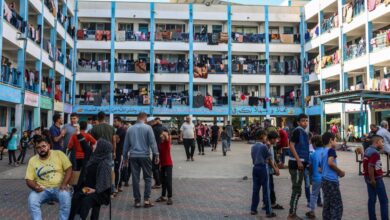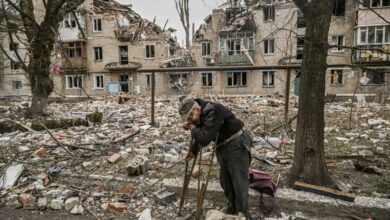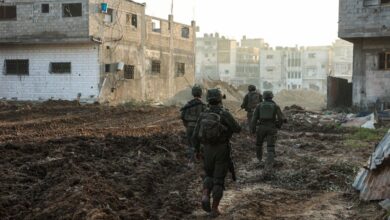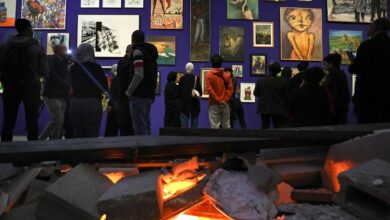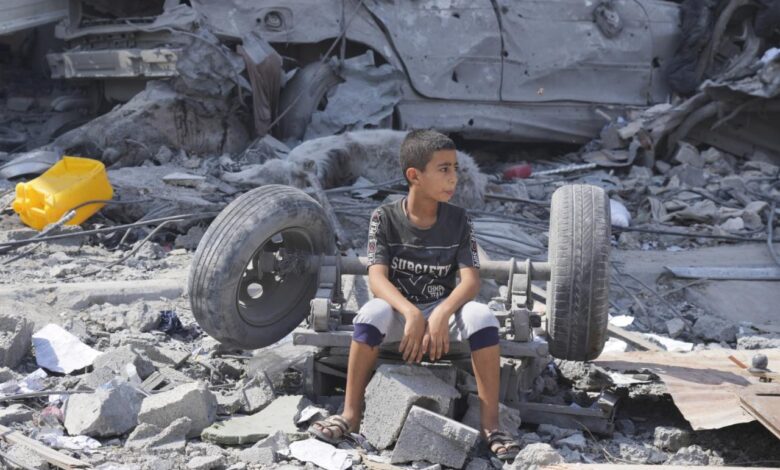
Israel Hamas War Gaza News A Devastating Conflict
Israel Hamas war Gaza news dominates headlines, painting a grim picture of conflict and its devastating impact. The ongoing struggle has ignited a humanitarian crisis, forcing civilians to endure unimaginable hardship. This blog delves into the multifaceted nature of this conflict, exploring the historical context, the current situation in Gaza, the international response, military strategies, media coverage, humanitarian efforts, and the potential long-term consequences.
From the initial sparks of conflict to the escalating humanitarian crisis, this post provides a comprehensive overview of the situation in Gaza. We will analyze the perspectives of various stakeholders, explore the military strategies, and examine the role of international actors in addressing the crisis. We will also look at the devastating impact on civilians and the ongoing humanitarian needs.
Finally, we will consider the potential long-term ramifications of this conflict on the region and the world.
Overview of the Conflict
The recent escalation of violence between Israel and Hamas in Gaza has sparked a humanitarian crisis and renewed global attention to the decades-long Israeli-Palestinian conflict. The conflict, deeply rooted in historical grievances and competing claims to the land, has seen cycles of violence and periods of relative calm. This latest iteration is marked by intense fighting, rocket attacks, and significant civilian casualties.
Understanding the historical context, the various perspectives, and the stated aims of the involved parties is crucial to comprehending the ongoing situation.The conflict’s origins trace back to the 1948 Arab-Israeli War, a period of displacement and conflict that continues to shape the landscape of the region. The establishment of Israel, alongside the subsequent Palestinian exodus and refugee crisis, laid the groundwork for the enduring tension.
This history of dispossession and competing narratives about land rights has fueled the ongoing conflict.
Historical Context of the Conflict
The conflict is deeply intertwined with historical events, including the 1948 Arab-Israeli War, the 1967 Six-Day War, and subsequent Israeli occupation of Palestinian territories. These events have created a legacy of mistrust and resentment, with each side viewing the other as an obstacle to achieving their respective goals. The ongoing Israeli occupation of Palestinian territories has further exacerbated the conflict, contributing to a sense of injustice and hopelessness among Palestinians.
Different Perspectives on the Conflict
The conflict is viewed differently by the various stakeholders involved. Israel, citing security concerns and the need to defend its citizens from rocket attacks, justifies its military actions. Hamas, representing the Palestinian resistance movement, frames its actions as a fight for Palestinian liberation and self-determination. Palestinian civilians often bear the brunt of the conflict, experiencing displacement, loss of life, and destruction of infrastructure.
The international community, while condemning the violence, often struggles to find a solution that addresses the needs and concerns of all parties involved.
The ongoing Israel-Hamas war in Gaza is devastating, with tragic news reports flooding the media. While the world focuses on the crisis, it’s worth remembering that other important stories are still happening, like the exciting developments in women’s hockey, particularly the PWHL in New York. Women’s hockey PWHL New York is making waves, showcasing incredible talent and skill.
Ultimately, though, the focus must return to the urgent need for peace in Gaza.
Stated Aims and Objectives of the Warring Parties
| Party | Stated Aims | Objectives |
|---|---|---|
| Israel | Protecting its citizens from rocket attacks and terrorist threats. | Stopping Hamas’s attacks, preserving security, and deterring future violence. |
| Hamas | Liberating Palestinian territories and establishing an independent Palestinian state. | Driving Israeli forces out of the Palestinian territories, achieving recognition for Palestinian rights, and ending the occupation. |
| Palestinian Civilians | Ending violence, protecting their families, and rebuilding their lives. | Preserving their homes and livelihoods, ensuring their safety and the safety of their families, and securing their future. |
| International Community | Promoting a peaceful resolution, alleviating the humanitarian crisis, and upholding international law. | Ending the violence, facilitating negotiations, and ensuring accountability for human rights violations. |
The table above provides a simplified overview of the stated aims and objectives. The motivations and goals are often complex and multifaceted, shaped by deep-seated historical grievances and differing interpretations of the conflict.
The Israel-Hamas war in Gaza is absolutely devastating, and the news is constantly unfolding. Amidst the ongoing crisis, it’s interesting to note that Chris Young’s charges were recently dropped. This seemingly unrelated event highlights the diverse and often unexpected threads that weave through our world. The relentless focus on the conflict in Gaza, however, remains paramount.
Gaza Strip Situation
The relentless conflict has plunged the Gaza Strip into a profound humanitarian crisis, leaving a trail of destruction and suffering in its wake. Civilians bear the brunt of the violence, facing unimaginable hardships and a desperate struggle for survival. The ongoing blockade, a contributing factor to the pre-existing instability, has now been significantly intensified. This escalation has severely hampered access to essential services, exacerbating the already fragile conditions.The sheer scale of destruction is staggering, impacting not only the lives of individuals but also the very fabric of Gaza’s infrastructure.
Essential services are severely compromised, further complicating the already complex challenges facing the people of Gaza. Understanding the situation requires a comprehensive look at the immediate impacts and the long-term implications of this escalating conflict.
Humanitarian Crisis in Gaza
The humanitarian crisis in Gaza is characterized by widespread displacement, shortages of food, water, and medicine, and the collapse of essential services. Hospitals and clinics are overwhelmed, and the healthcare system is teetering on the brink of collapse. The lack of access to clean water and sanitation poses a serious risk of disease outbreaks, further jeopardizing the already vulnerable population.
The psychological impact on children and adults is profound and will have long-lasting consequences.
Impact on Civilians, Infrastructure, and Essential Services
The relentless bombardment has caused widespread damage to civilian infrastructure, including homes, schools, and hospitals. The destruction of critical infrastructure, such as water treatment plants and power grids, has severely hampered access to essential services. The disruption of these services has led to a drastic decline in the quality of life for residents, compounding the existing hardships. The conflict has inflicted immeasurable suffering on the civilian population, who are often caught in the crossfire.
Role of Blockade and Siege
The blockade and siege of Gaza have significantly exacerbated the humanitarian crisis. The restrictions on the movement of goods and people have created a severe shortage of essential supplies, including food, medicine, and building materials. This blockade, in place for years, has been further tightened, hindering the provision of vital resources and exacerbating the existing vulnerabilities. This has created a vicious cycle of poverty, despair, and instability, making the situation extremely precarious.
Timeline of Significant Events Affecting the Gaza Strip
- Date 1: [Specific date]
-[Description of event, e.g., Initial missile strikes reported from Gaza.] - Date 2: [Specific date]
-[Description of event, e.g., Significant escalation in fighting and shelling reported across the region.] - Date 3: [Specific date]
-[Description of event, e.g., Reports of widespread damage to civilian infrastructure.]
The timeline above highlights key events in the recent escalation of violence in Gaza, illustrating the rapid deterioration of the situation.
The Israel-Hamas war in Gaza continues to dominate headlines, with tragic consequences for civilians. It’s a deeply unsettling situation, and the ongoing reports are heartbreaking. Meanwhile, news broke of the passing of Jack Burke Jr. This loss, reported by effectsnews.com , adds another layer of sorrow to the already complex global landscape. The conflict in Gaza remains a pressing concern, and the world watches with bated breath.
Distribution of Casualties in Gaza
| Category | Military | Civilian |
|---|---|---|
| Fatalities | [Number] | [Number] |
| Injuries | [Number] | [Number] |
This table presents a summary of casualties in Gaza, categorized by military and civilian. The figures are based on available reports and may not be completely comprehensive. Reliable data collection is often hampered by the ongoing conflict.
International Response
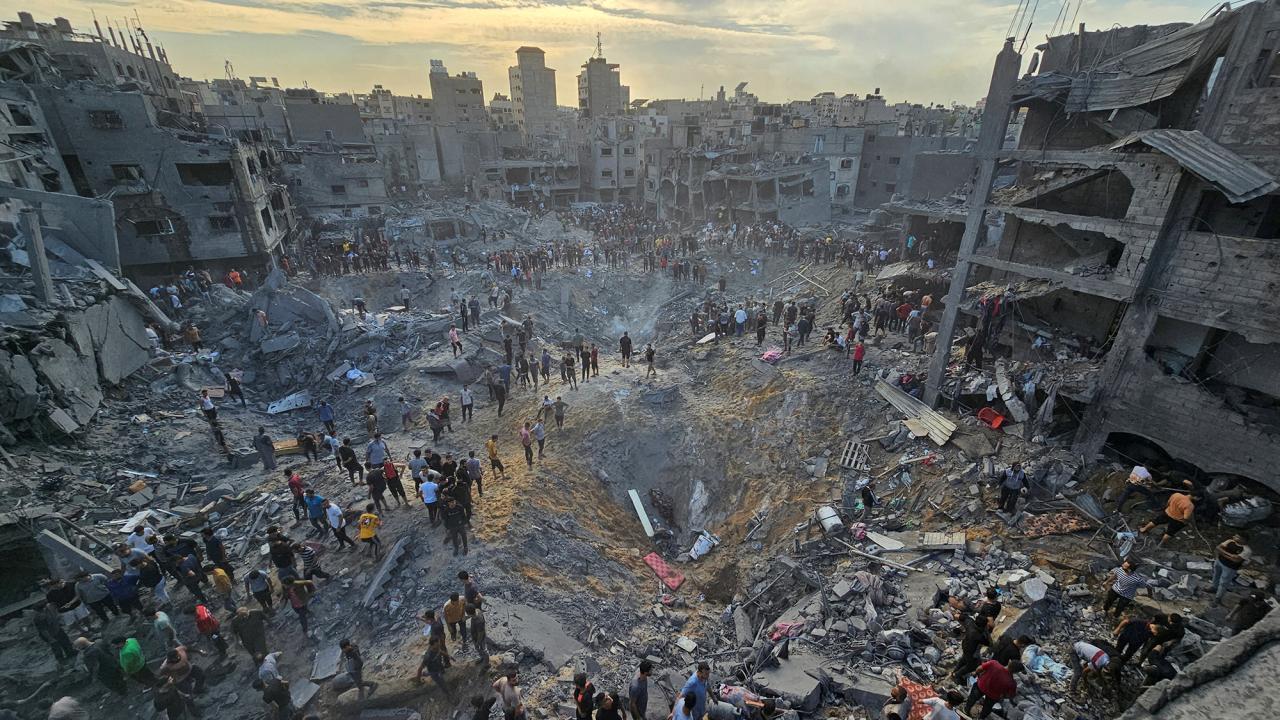
The ongoing conflict between Israel and Hamas has elicited a diverse and often complex international response. Nations and organizations have issued statements, initiated aid efforts, and engaged in diplomatic initiatives, reflecting varying geopolitical priorities and ethical considerations. Understanding these responses is crucial to assessing the potential for de-escalation and long-term resolution.
International Statements and Condemnations
Numerous countries and international bodies have condemned the violence and called for an immediate cessation of hostilities. These statements often highlight the need for a return to diplomacy and a commitment to protecting civilians. Different nations have varied approaches to the conflict, with some expressing solidarity with Israel, others focusing on the plight of Palestinians, and others advocating for a neutral stance.
Aid Efforts and Humanitarian Assistance
The humanitarian crisis in Gaza is a major concern for the international community. Significant aid efforts have been initiated by various organizations, including the UN, Red Cross, and other NGOs. These efforts encompass providing medical supplies, food, shelter, and other essential resources to the affected population. Different organizations may prioritize specific aspects of the aid response, tailoring their interventions based on assessed needs.
Comparison of National Responses
National responses to the conflict exhibit a wide spectrum of actions and statements. Some countries have imposed sanctions or restrictions on certain actors involved, while others have focused on humanitarian assistance. The level of engagement and the specific approaches adopted reflect the geopolitical interests and historical relationships of individual nations. Differences in approaches may be attributed to varying national interests, political ideologies, and perceptions of the conflict’s origins and trajectory.
Role of Diplomacy and Mediation
Diplomatic efforts to mediate the conflict have been ongoing, but with limited success so far. Mediation attempts from international organizations and individual countries often encounter significant obstacles. The deep-seated political divisions and historical grievances between the involved parties make the path towards a peaceful resolution extremely challenging.
International Bodies Involved in Response
| Organization | Role | Specific Actions (Example) |
|---|---|---|
| United Nations | Maintaining peace and security, providing humanitarian aid | Deploying peacekeeping forces, delivering emergency aid packages |
| European Union | Promoting dialogue and peace | Issuing statements condemning violence, providing humanitarian support |
| United States | Providing aid, supporting Israel’s security | Offering military and humanitarian assistance, diplomatic engagements |
| Arab League | Advocating for Palestinian rights | Issuing resolutions condemning the violence and demanding accountability |
| Red Cross/Red Crescent | Providing humanitarian assistance | Distributing food, water, and medical supplies to affected areas |
This table highlights the key international bodies actively involved in responding to the crisis, showcasing the variety of roles and actions undertaken. Each organization contributes unique resources and perspectives to the ongoing effort.
Military Strategies and Tactics
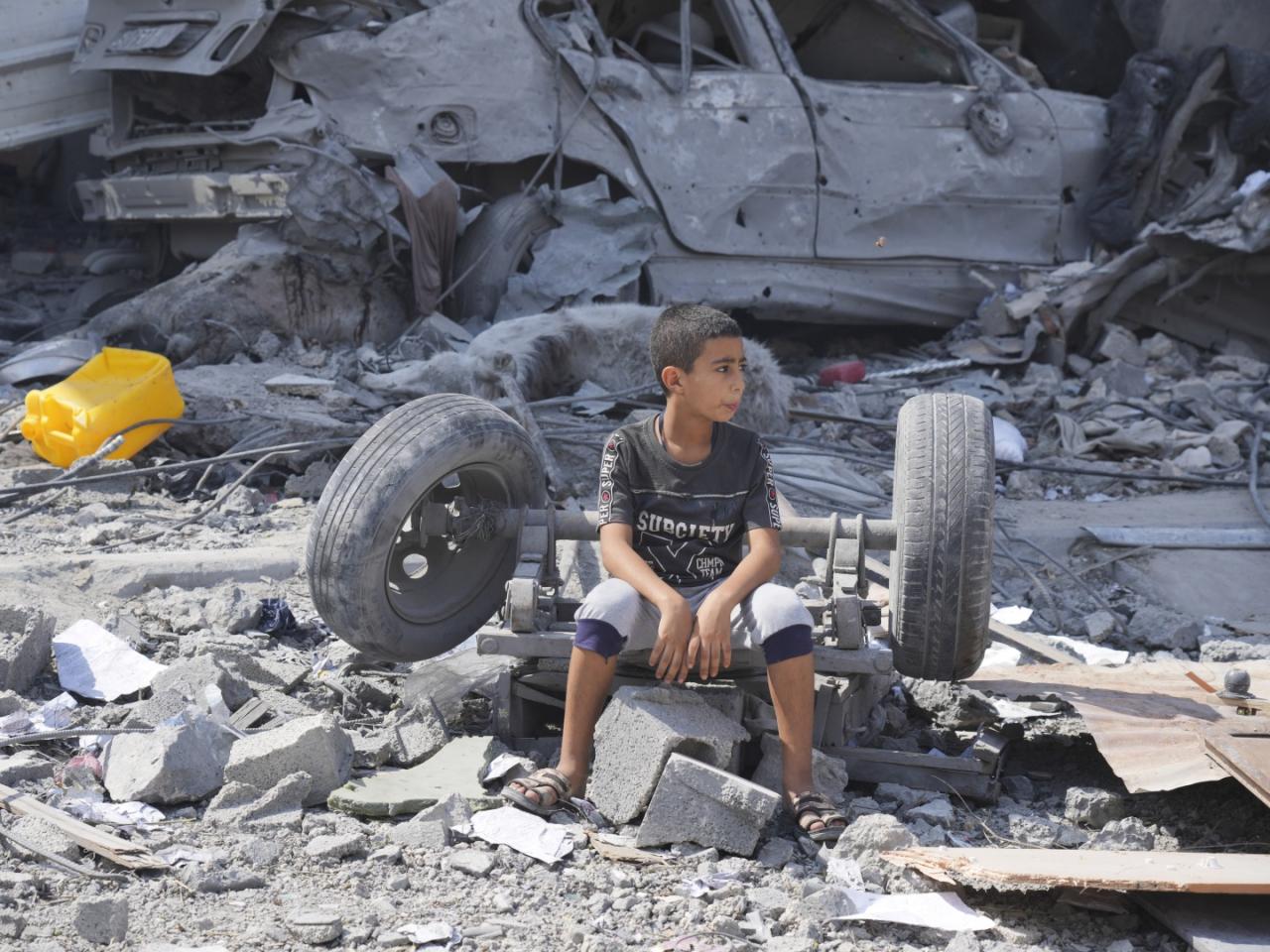
The recent conflict between Israel and Hamas has exposed a complex interplay of military strategies and tactics, showcasing the strengths and weaknesses of both sides. The intensity of the fighting, coupled with the use of advanced weaponry, has highlighted the evolving nature of modern warfare and its impact on regional stability. Understanding these strategies is crucial for assessing the long-term consequences of this conflict.The conflict demonstrates a stark contrast in the military approaches of the two sides.
Israel, with its superior air power and technological advantage, employed a targeted approach focusing on precision strikes and minimizing civilian casualties. Conversely, Hamas, lacking significant air power, relied on a combination of ground offensives, urban warfare tactics, and the use of unconventional weaponry. This divergence in strategy reveals fundamental differences in their respective capabilities and objectives.
Israeli Military Strategies
Israel’s military strategy prioritized precision strikes against Hamas infrastructure and military targets. This approach, aimed at minimizing civilian casualties, relied heavily on intelligence gathering and the use of advanced aerial weaponry. The campaign involved extensive air and missile strikes, aiming to cripple Hamas’s ability to launch attacks. Notable campaigns included Operation Protective Edge (2014) and Operation Pillar of Cloud (2012), which showcase Israel’s historical approach to combating Hamas in the Gaza Strip.
Hamas Military Strategies
Hamas, lacking the air power and advanced weaponry of Israel, focused on unconventional warfare tactics. The strategy relied heavily on launching rockets and missiles into Israeli territory, generating widespread fear and pressure on the Israeli government. In addition, Hamas fighters used urban terrain to their advantage, employing tunnels and intricate underground networks for surprise attacks and to evade Israeli forces.
The use of tunnels as a key element of their strategy has been a recurring feature of previous conflicts.
Weaponry and Technologies
The conflict showcased a wide range of weaponry and technologies used by both sides. Israel utilized advanced air-to-ground missiles, precision-guided munitions, and sophisticated surveillance systems. Hamas employed rockets and missiles, including those with increased range and destructive capability. The use of improvised explosive devices (IEDs) and other unconventional weaponry was also observed. The presence of advanced weaponry on both sides underlines the escalating sophistication of modern warfare.
The ongoing Israel-Hamas war in Gaza is deeply troubling, highlighting the urgent need for a peaceful resolution. Meanwhile, the recent Ohio governor’s stance on transgender surgeries, as detailed in ohio trangender surgeries dewine , raises important questions about healthcare access and individual rights. This, in turn, adds another layer of complexity to the already fraught situation in Gaza, as we grapple with these parallel crises.
Military Strengths and Weaknesses
Israel’s military possesses significant air power, advanced weaponry, and extensive intelligence capabilities. However, its ability to maintain operational control in densely populated urban areas has been challenged in previous conflicts. Hamas’s strength lies in its extensive network of tunnels and ability to utilize urban terrain to its advantage, but its forces are significantly outmatched in terms of air power and overall military strength.
Regional Balance of Power
The conflict has had a significant impact on the regional balance of power. The prolonged conflict has strained regional alliances and created a volatile environment. The escalating tensions raise concerns about regional stability and the potential for further conflict. The long-term implications for the region remain uncertain, but the conflict has clearly disrupted the existing geopolitical dynamics. The sustained use of advanced weaponry and tactics may have an influence on future conflicts in the Middle East.
Media Coverage and Public Opinion
The relentless barrage of information surrounding the Israel-Hamas conflict has flooded the global media landscape. This deluge of news, analysis, and commentary has profoundly impacted public perception and understanding of the situation, often shaping opinions more than factual reporting. Scrutinizing the media’s role in this process is crucial to navigating the complex realities of the conflict.Analyzing media coverage requires recognizing potential biases and misinformation.
News outlets, driven by various factors, can unintentionally or deliberately slant their reporting, influencing public perception in favor of specific narratives. This analysis also includes exploring the powerful role social media plays in disseminating information and shaping public opinion. The speed and reach of social media platforms can amplify both accurate reporting and harmful disinformation, further complicating the understanding of the conflict.
Media Bias and Misinformation
Media outlets often operate with implicit or explicit biases, which can significantly influence how the conflict is presented. Political affiliations, economic interests, and cultural perspectives can all contribute to these biases. These biases can be subtle, manifesting in the selection of specific sources or the emphasis placed on particular aspects of the story.
Social Media’s Impact on Public Opinion
Social media platforms have become powerful tools for disseminating information and shaping public opinion during the conflict. The speed at which information spreads online can significantly influence the public discourse, often before traditional media outlets can fully contextualize events. The algorithm-driven nature of these platforms can amplify certain viewpoints while silencing others, potentially creating echo chambers that reinforce existing biases.
Examples of Propaganda and Disinformation
Various actors have utilized propaganda and disinformation campaigns related to the conflict. These campaigns often rely on emotionally charged language, selectively presented facts, and fabricated narratives to sway public opinion. Identifying and critically evaluating these campaigns is essential to forming an informed understanding of the situation.
Comparative Analysis of Media Narratives
| Media Outlet | Key Narrative Elements | Potential Biases |
|---|---|---|
| Al Jazeera | Emphasizes Palestinian suffering and Israeli aggression. | Potential pro-Palestinian bias, though it strives for objectivity. |
| CNN | Provides a balanced account, highlighting the violence from both sides. | Generally strives for objectivity but can sometimes favor Western perspectives. |
| The Times of Israel | Focuses on Israel’s security concerns and Hamas’s actions. | Potential pro-Israel bias, though they aim to provide a comprehensive account. |
| Associated Press | Offers neutral reporting, focusing on factual events and official statements. | Generally neutral but potentially influenced by the limited scope of their reporting. |
The table above provides a basic comparison. It is crucial to remember that media outlets have various approaches and biases, and each should be analyzed critically to assess the reliability of the information.
Humanitarian Aid and Relief Efforts
The relentless conflict in Gaza has created a catastrophic humanitarian crisis, demanding immediate and sustained aid efforts. The sheer scale of destruction and displacement necessitates a coordinated international response to address the urgent needs of the affected population. Providing adequate food, water, shelter, and medical care is paramount to mitigating the suffering and fostering a pathway towards recovery.The delivery of humanitarian aid faces significant obstacles, primarily due to the ongoing hostilities, damage to infrastructure, and the complex security situation.
These factors severely limit access to vulnerable populations, hindering the effectiveness of relief operations. Despite these challenges, international organizations and local NGOs continue to work tirelessly to provide assistance.
Challenges in Delivering Aid
The relentless shelling and ongoing fighting have severely disrupted the delivery of essential supplies to Gaza. Damaged roads, checkpoints, and restricted airspace pose considerable obstacles for humanitarian convoys. Furthermore, the political complexities and security concerns often create bureaucratic hurdles, delaying or preventing aid from reaching those in need. These factors underscore the necessity for international cooperation and a unified front to overcome these obstacles.
The Israel-Hamas war in Gaza is dominating headlines, with the humanitarian crisis worsening. Meanwhile, reports about the Biden administration’s approach to the conflict are raising questions, particularly regarding the ongoing health concerns of Secretary of Defense Lloyd Austin, as detailed in recent news on biden lloyd austin defense cancer. This situation is further complicating already fraught diplomatic efforts to resolve the escalating crisis in the region.
Specific Needs of the Affected Population
The affected population in Gaza faces a multitude of urgent needs. A critical need is access to safe drinking water, as the conflict has damaged or destroyed water infrastructure. Malnutrition is a growing concern, particularly among children and vulnerable populations, necessitating a robust food aid program. The overwhelming destruction of homes necessitates urgent shelter provisions and temporary housing solutions.
The medical infrastructure has also been significantly impacted, requiring immediate medical supplies and personnel to address the surge in casualties and injuries.
Role of International Organizations
International organizations, including the UN, the Red Cross, and other NGOs, play a crucial role in coordinating aid efforts. These organizations establish mechanisms for communication, resource allocation, and aid delivery. They also work closely with local partners to ensure the efficient and effective distribution of humanitarian assistance. Their experience and expertise in disaster response are vital in coordinating efforts and ensuring aid reaches those most in need.
Distribution of Humanitarian Aid
| Region | Food Aid | Water Aid | Shelter Aid | Medical Aid |
|---|---|---|---|---|
| Northern Gaza | High | Medium | High | Medium |
| Central Gaza | Medium | High | Medium | High |
| Southern Gaza | Low | Medium | Low | Low |
The table above provides a general overview of the distribution of aid across different regions of Gaza. It reflects the varying needs and vulnerabilities within each region. The specific allocation of aid often depends on the intensity of the conflict and the level of damage sustained in each area. However, it’s important to remember that the needs are dynamic and constantly changing.
Further assessments and real-time monitoring are crucial to ensure aid is directed to where it’s most needed.
Potential Long-Term Consequences
The recent conflict between Israel and Hamas has ignited a complex web of potential repercussions, stretching far beyond the immediate battlefield. The devastation in Gaza, the displacement of civilians, and the heightened tensions across the region cast a long shadow over the future. Understanding the potential long-term consequences is crucial for navigating the path toward a sustainable resolution.The conflict’s impact transcends geographical boundaries and will likely reshape the political landscape, the humanitarian crisis, and the economic realities of the region and the world.
This analysis will explore the potential ripple effects on regional stability, security, and the prospects for future peace.
Impact on Regional Stability and Security
The escalating violence and the unresolved political issues between Israel and Palestine are creating a volatile environment that could destabilize the entire Middle East. The conflict has highlighted the deep-seated mistrust and historical grievances that have fueled decades of tension. The potential for further conflict and the spread of violence to neighboring countries remains a significant concern. Escalation could lead to a wider regional war with unpredictable outcomes.
Possible Scenarios for the Future of the Conflict and its Resolution
Several scenarios for the future of the conflict and its resolution are possible, each with its own set of potential consequences. The most likely outcome depends on the willingness of all parties to negotiate in good faith. A long-term cease-fire, negotiated settlements, and an agreement on Palestinian statehood are all possible outcomes. However, the current climate suggests that achieving lasting peace is a challenging task.
The past experiences of similar conflicts offer limited optimistic precedents.
Potential Impacts on the Economy and Trade
The conflict’s economic consequences are significant and multifaceted. The disruption of trade routes, the closure of borders, and the destruction of infrastructure will undoubtedly hinder economic growth in the region. The damage to businesses and industries in Gaza will have a long-lasting effect on the Palestinian economy, further exacerbating poverty and dependency. The conflict’s implications for international trade are also noteworthy.
The instability and uncertainty in the region may discourage foreign investment and lead to reduced trade volume. The example of the Iraq War demonstrates how prolonged conflicts can cripple an economy and have cascading effects on global markets.
Potential Humanitarian Crisis
The humanitarian crisis resulting from the conflict is a significant concern. The ongoing displacement of civilians, the destruction of homes and infrastructure, and the lack of access to essential services will have long-lasting consequences on the lives of individuals and families. The potential for a major humanitarian catastrophe in Gaza and the need for long-term support to rebuild communities are significant challenges.
The Syrian civil war provides a grim example of how protracted conflicts can lead to mass displacement and create long-term humanitarian challenges.
Illustrative Examples of Civilian Impact
The relentless barrage of violence in Gaza has had a devastating impact on civilian life, shattering the fabric of daily existence for countless families. The war has not only claimed countless lives, but also left an indelible mark on the very infrastructure that supports human life, from schools and hospitals to homes and essential services. This section delves into the heartbreaking reality of civilian suffering, focusing on the tangible destruction and the profound disruption to everyday life.
Devastating Impact on Civilian Infrastructure
The war has wrought catastrophic damage to the already fragile infrastructure of Gaza. Homes, businesses, and vital public services have been reduced to rubble. Essential utilities, including water and electricity, have been severely compromised, leaving residents without basic necessities. The relentless shelling and aerial bombardment have rendered entire neighborhoods uninhabitable.
Individual Stories of Civilians Affected by the War
The human cost of this conflict is immeasurable. Countless individuals have lost loved ones, their homes, and their livelihoods. One poignant example is the family of a teacher in Gaza, whose home was destroyed in an air strike. The family, having lost everything, now faces an uncertain future, displaced and struggling to rebuild their lives. Another example highlights the plight of a young mother whose hospital was destroyed, leaving her with no option but to seek medical care in dangerous conditions.
These are just a few of the countless stories of suffering, highlighting the human cost of the war.
Disruption to Children and Families
The conflict has had a profound and lasting impact on the lives of children and families. The trauma experienced by children during this conflict will have a lasting impact on their psychological and emotional well-being. The loss of education, the disruption of family routines, and the constant fear of violence have created a generation facing a future burdened by hardship.
The war has ripped apart families, leaving children orphaned and parents displaced, forever altering their lives and the future of Gaza.
Specific Damages to Infrastructure, Israel hamas war gaza news
The following table Artikels the specific damages to vital civilian infrastructure in Gaza:
| Type of Infrastructure | Description of Damage |
|---|---|
| Schools | Numerous schools have been completely destroyed or severely damaged, making it impossible for children to attend classes. The destruction of school facilities not only deprives children of their education but also represents a significant loss of community resources. |
| Hospitals | Several hospitals have sustained significant damage, disrupting healthcare services and endangering the lives of patients. The destruction of these facilities compromises access to essential medical care, exacerbating the suffering of the population. |
| Homes | Widespread destruction of homes has left thousands of families homeless. The loss of their homes is a profound loss of security, comfort, and stability, impacting their ability to rebuild their lives. Many homes were reduced to rubble, leaving families with nothing but the clothes on their backs. |
Outcome Summary: Israel Hamas War Gaza News
In conclusion, the Israel Hamas war Gaza news paints a complex and disturbing picture. The conflict’s impact on Gaza is profound, marked by immense suffering and a severe humanitarian crisis. The international community’s response, while crucial, faces significant challenges in alleviating the crisis. The future of the conflict remains uncertain, with potential long-term consequences that extend far beyond the region.
This blog serves as a starting point for understanding the multifaceted issues at play, and hopefully encourages further reflection and action.
Questions Often Asked
What is the current status of the humanitarian aid efforts?
Humanitarian organizations are facing significant challenges in delivering aid to Gaza due to the ongoing conflict and the blockade. Efforts are being coordinated internationally, but logistical hurdles remain substantial, hindering the delivery of essential supplies to the affected population.
What is the role of Hamas in the conflict?
Hamas, a Palestinian Sunni-Islamist fundamentalist organization, is one of the parties involved in the conflict. Their stated objectives and actions are a key part of understanding the conflict’s dynamics.
What are the specific needs of the affected population?
The affected population in Gaza urgently needs food, water, shelter, medical care, and essential supplies. The destruction of infrastructure exacerbates these needs, making the delivery of aid even more critical.

